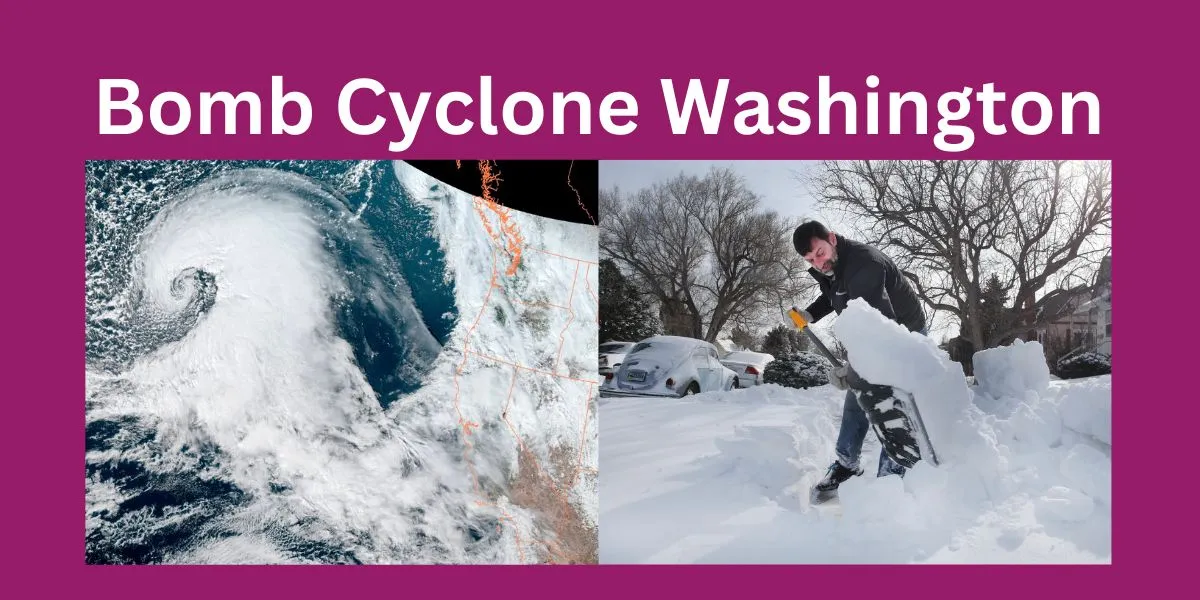When you hear the term “bomb cyclone,” it sounds like something out of a sci-fi movie, doesn’t it? But for those living in Washington, this weather phenomenon is all too real. Bomb cyclones have been making headlines in recent years, bringing intense storms, heavy rain, fierce winds, and even snow. So, what exactly is a bomb cyclone, and why is it making waves (literally) in Washington? Let’s dive into the details!
What is a Bomb Cyclone?
Breaking Down the Term
A bomb cyclone is a rapidly intensifying storm. Technically, it occurs when the atmospheric pressure in a storm system drops by at least 24 millibars within 24 hours. It’s like a storm on steroids!
Why the Dramatic Name?
The term “bomb” refers to the explosive nature of the storm’s development, while “cyclone” describes its rotating wind pattern. Together, they make a force to be reckoned with.
Why Does Washington Experience Bomb Cyclones?
A Perfect Storm of Conditions
Washington’s coastal location and proximity to the Pacific Ocean make it a hotspot for these storms. Warm ocean currents collide with cold air masses, creating the ideal recipe for bomb cyclones to form.
The Role of Atmospheric Rivers
Ever heard of atmospheric rivers? These narrow bands of concentrated moisture in the atmosphere feed into bomb cyclones, intensifying their power. Think of it as a fire hose of rain aimed right at Washington.
How Do Bomb Cyclones Impact Washington?
Heavy Rain and Flooding
When a bomb cyclone hits, you can bet there will be torrential downpours. For Washingtonians, this often means rising rivers, flooded streets, and waterlogged basements.
Fierce Winds
With wind speeds reaching up to hurricane levels, bomb cyclones can knock down trees, power lines, and even small structures. Remember that gusty storm last winter? Chances are, it was a bomb cyclone.
Snowstorms in Higher Elevations
Washington’s mountains don’t escape the chaos either. Bomb cyclones can bring massive snow dumps, creating dangerous conditions for hikers and skiers.
Recent Bomb Cyclones in Washington
The 2021 Bomb Cyclone
Who could forget the October 2021 bomb cyclone? It brought record-breaking rainfall, winds topping 50 mph, and widespread power outages. Residents were left scrambling for flashlights and sandbags.
Lessons Learned
Washington learned the importance of early preparation and reliable communication during that storm. Emergency services stepped up, but the storm still left its mark.
How to Prepare for a Bomb Cyclone
Stock Up on Essentials
Make sure your pantry is stocked with non-perishables, water, and batteries. No one wants to make a grocery run in the middle of a storm!
Secure Outdoor Items
Patio furniture, trash cans, and garden tools can quickly turn into dangerous projectiles in strong winds. Secure them or bring them indoors.
Check Your Emergency Kit
Does your emergency kit include flashlights, a first aid kit, and important documents? If not, it’s time to get organized.
What to Do During a Bomb Cyclone
Stay Indoors
This is not the time for a scenic drive or a quick jog. Stay safe and dry inside your home.
Monitor Weather Updates
Keep an eye on local news or a reliable weather app. Bomb cyclones can evolve rapidly, and staying informed is crucial.
Avoid Flooded Areas
Driving through flooded streets might seem like a shortcut, but it’s extremely dangerous. Turn around; don’t drown.
How Washington Handles Bomb Cyclones
Emergency Services on Alert
Washington’s emergency response teams are always on standby during storm season. From clearing fallen trees to managing floods, they’ve got their hands full.
Public Awareness Campaigns
Local governments and weather agencies work tirelessly to inform residents about impending storms and how to prepare. Early warnings save lives!
The Role of Climate Change
Making Storms Stronger
Scientists are clear: climate change is making storms like bomb cyclones more frequent and intense. Warmer oceans and shifting weather patterns are the main culprits.
What Can We Do?
Reducing carbon emissions and investing in sustainable infrastructure are critical. Small actions, like using public transport or conserving energy, can make a difference too.
What Lies Ahead for Washington?
A Stormy Future
Washington residents can expect more bomb cyclones in the coming years. Preparing now will help minimize future impacts.
Community Resilience
The silver lining? Washingtonians are a resilient bunch. From community clean-ups to neighborly support, these storms often bring out the best in people.
Conclusion
Bomb cyclones might sound terrifying, but with a bit of preparation and awareness, you can weather the storm (pun intended). As Washington faces more of these intense weather events, it’s crucial to stay informed and take proactive measures. After all, Mother Nature doesn’t play by the rules, but that doesn’t mean we can’t be ready for her curveballs.
FAQs
Q1: Can a bomb cyclone be predicted?
Yes, meteorologists can usually predict a bomb cyclone a few days in advance using satellite data and weather models.
Q2: How long does a bomb cyclone last?
Most bomb cyclones last for 24 to 48 hours, but their effects, like flooding or power outages, can linger much longer.
Q3: Are bomb cyclones the same as hurricanes?
Not quite. While both are powerful storms, hurricanes form over warm tropical waters, while bomb cyclones occur in mid-latitudes and don’t require warm water.
Q4: How common are bomb cyclones in Washington?
They’re not an everyday occurrence but are becoming more frequent due to climate change and shifting weather patterns.
Q5: What should I do if a bomb cyclone is forecasted?
Prepare an emergency kit, secure outdoor items, stay indoors during the storm, and monitor weather updates closely.










